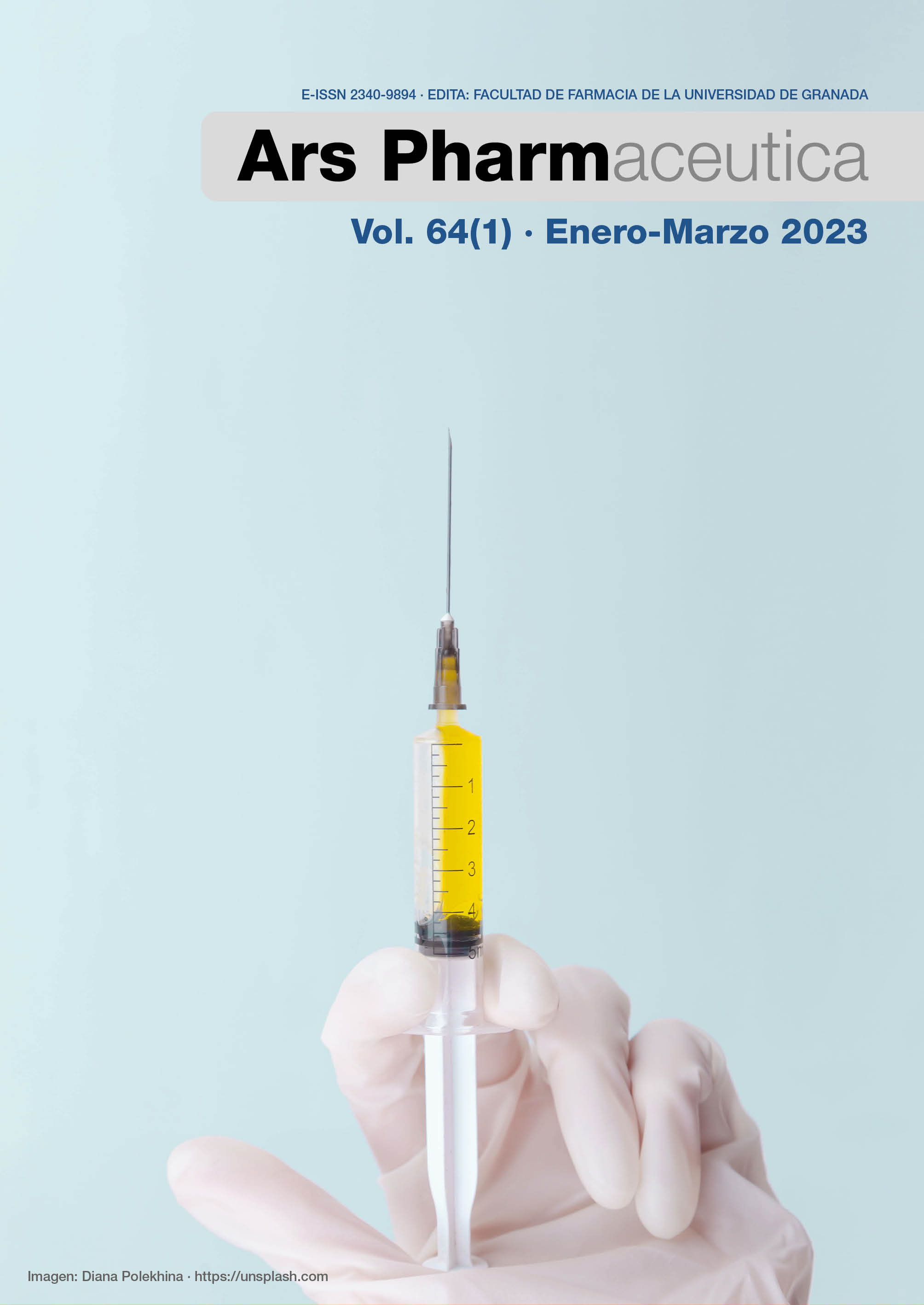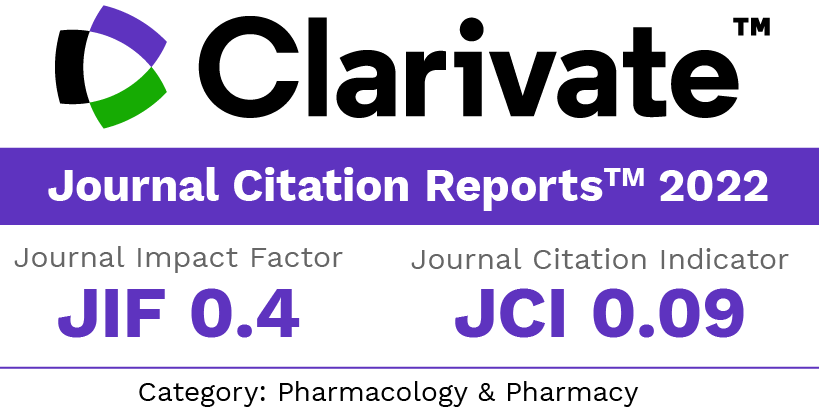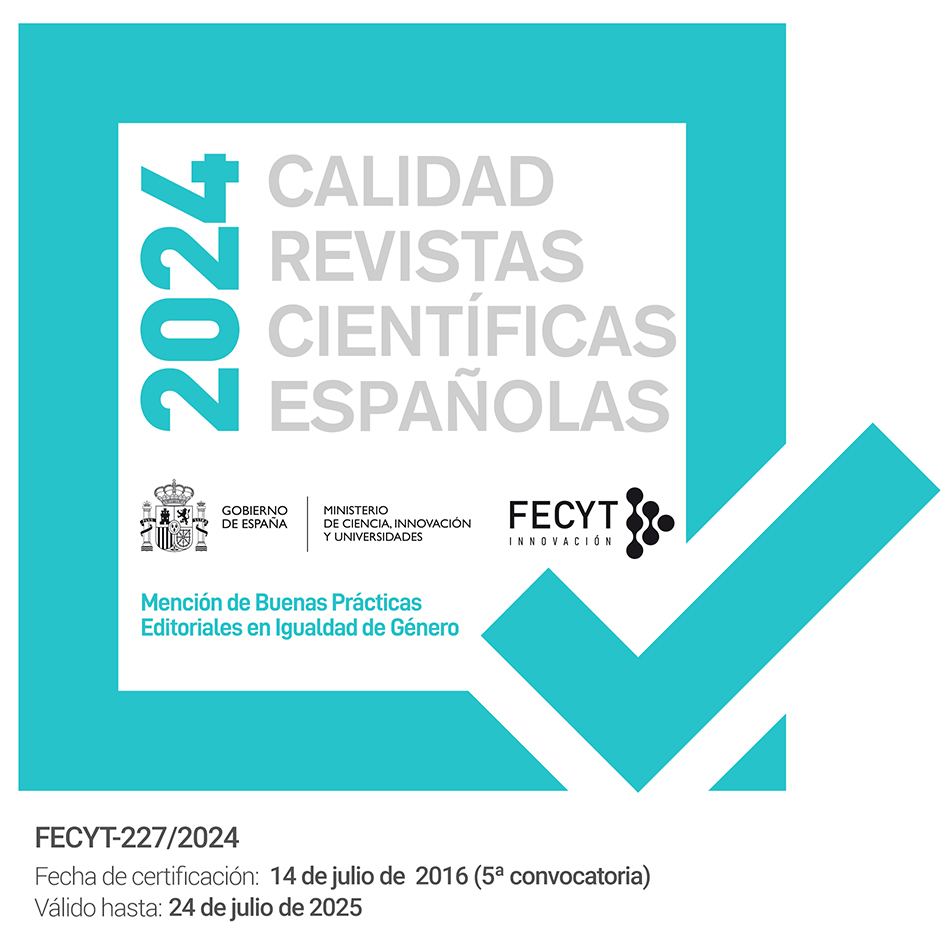Prevalence of poor sleep quality and associated lifestyle habits: A cross-sectional study in community pharmacies
DOI:
https://doi.org/10.30827/ars.v64i1.26223Keywords:
Sleep Hygiene, Sleep Quality, Community Pharmacy, Healthy Lifestyle, Prevalence, Risk FactorsAbstract
Introduction: Many lifestyle habits can negatively affect sleep quality (SQ) and lead to poor quality of life. This makes it important to determine the prevalence of poor SQ in the population and the lifestyle habits that may be associated with it, with a view to designing appropriate interventions for improving SQ. The aim of this study was to examine the prevalence of poor SQ among the population of Salamanca (Spain) and its relationship with specific lifestyle habits
Method: A cross-sectional study was carried out between July and November 2019. SQ was studied in 261 patients using the Pittsburgh Sleep Quality Index, and the frequency with which patients performed a series of lifestyle habits was quantified. The association between variables was assessed using multivariate binary logistic regression.
Results: Almost half of the study population (48.7%) was found to have poor SQ. Physical exercise was a protective factor against poor SQ (OR = 0.221; CI95%: 0.081-0.603). Risk factors for poor SQ included being disturbed at night (OR = 3.606; CI95%: 1.892-6.872), going to bed preoccupied (OR = 3.145; CI95%: 1.528-6.471), reading trivial material (OR = 2.475; CI95%: 1.208-5.070), and playing video games (OR = 3.639; CI95%: 1.326-9.984).
Conclusions: In Salamanca (Spain), almost half of the study population stated that they suffered poor SQ. Although numerous lifestyle habits that may relate to poor SQ were studied, a statistically significant relationship was only found for a few of them.
Downloads
References
Cespedes EM, Dudley KA, Sotres-Alvarez D, Zee PC, Daviglus ML, Shah NA, et al. Joint associations of insomnia and sleep duration with prevalent diabetes: The Hispanic Community Health Study/Study of Latinos (HCHS/SOL). J Diabetes. 2016 May;8(3):387. Doi: 10.1111/1753-0407.12308
Grandner MA, Jackson NJ, Pak VM, Gehrman PR. Sleep disturbance is associated with cardiovascular and metabolic disorders. J Sleep Res. 2012 Aug;21(4):427. Doi: 10.1111/j.1365-2869.2011.00990.x
Goldman-Mellor S, Gregory AM, Caspi A, Harrington H, Parsons M, Poulton R, et al. Mental Health Antecedents of Early Midlife Insomnia: Evidence from a Four-Decade Longitudinal Study. Sleep. 2014;37(11):1767–75. Doi: 10.5665/sleep.4168
Hillman D, Mitchell S, Streatfeild J, Burns C, Bruck D, Pezzullo L. The economic cost of inadequate sleep. Sleep. 2018 01;41(8):1–13. Doi: 10.1093/sleep/zsy083
Ohayon MM, Sagales T. Prevalence of insomnia and sleep characteristics in the general population of Spain. Sleep Med. 2010 Dec;11(10):1010–8. Doi: 10.1016/j.sleep.2010.02.018
Brasure M, MacDonald R, Fuchs E, Olson CM, Carlyle M, Diem S, et al. Management of Insomnia Disorder [Internet]. Rockville (MD): Agency for Healthcare Research and Quality (US); 2015. (AHRQ Comparative Effectiveness Reviews). Available from: http://www.ncbi.nlm.nih.gov/books/NBK343503/
Buysse DJ, Reynolds CF, Monk TH, Berman SR, Kupfer DJ. The Pittsburgh sleep quality index: A new instrument for psychiatric practice and research. Psychiatry Res. 1989 May 1;28(2):193–213. Doi: 10.1016/0165-1781(89)90047-4
Krystal AD, Edinger JD. Measuring sleep quality. Sleep Med. 2008 Sep;9 Suppl 1:S10-17. Doi: 10.1016/S1389-9457(08)70011-X
Taylor DJ, Schmidt-Nowara W, Jessop CA, Ahearn J. Sleep Restriction Therapy and Hypnotic Withdrawal versus Sleep Hygiene Education in Hypnotic Using Patients with Insomnia. J Clin Sleep Med. 2010 Apr 15;06(02):169–75. Doi: 10.5664/jcsm.27767
Stepanski EJ, Wyatt JK. Use of sleep hygiene in the treatment of insomnia. Sleep Med Rev. 2003 Jun;7(3):215–25. Doi: 10.1053/smrv.2001.0246
Duman M, Timur Taşhan S. The effect of sleep hygiene education and relaxation exercises on insomnia among postmenopausal women: A randomized clinical trial. Int J Nurs Pract. 2018 Aug;24(4):e12650. Doi: 10.1111/ijn.12650
Pereira FH, Trevisan DD, Lourenço DS, Silva JB, Lima MHM. Effect of Educational Strategies on the Sleep Quality of People with Diabetes: Randomized Clinical Trial. Aquichan. 2019 Aug;19(3):e1932. Doi: 10.5294/aqui.2019.19.3.2
Trauer JM, Qian MY, Doyle JS, Rajaratnam SMW, Cunnington D. Cognitive Behavioral Therapy for Chronic Insomnia: A Systematic Review and Meta-analysis. Ann Intern Med. 2015 Aug 4;163(3):191–204. Doi: 10.7326/M14-2841
Haynes J, Talbert M, Fox S, Close E. Cognitive Behavioral Therapy in the Treatment of Insomnia. South Med J. 2018 Feb;111(2):75–80. Doi: 10.14423/SMJ.0000000000000769
Friedrich A, Schlarb AA. Let’s talk about sleep: a systematic review of psychological interventions to improve sleep in college students. J Sleep Res. 2018 Feb;27(1):4–22. Doi: 10.1111/jsr.12568
Madrid-Valero JJ, Martínez-Selva JM, Ribeiro do Couto B, Sánchez-Romera JF, Ordoñana JR. Age and gender effects on the prevalence of poor sleep quality in the adult population. Gac Sanit. 2017 Feb;31(1):18–22. Doi: 10.1016/j.gaceta.2016.05.013
McCrae CS, Rowe MA, Dautovich ND, Lichstein KL, Durrence HH, Riedel BW, et al. Sleep Hygiene Practices in Two Community Dwelling Samples of Older Adults. Sleep. 2006 Dec 1;29(12):1551–60. Doi: 10.1093/sleep/29.12.1551
Buysse DJ, Reynolds CF, Monk TH, Berman SR, Kupfer DJ. The Pittsburgh sleep quality index: A new instrument for psychiatric practice and research. Psychiatry Res. 1989 May;28(2):193–213. Doi: 10.1016/0165-1781(89)90047-4
Royuela A, Macías Fernández J. Propiedades clinimetricas de la versión castellana del cuestionario de Pittsburgh. Vigilia-Sueño. 1997;9:81–94.
Jurado-Fasoli L, De-la-O A, Molina-Hidalgo C, Migueles JH, Castillo MJ, Amaro-Gahete FJ. Exercise training improves sleep quality: A randomized controlled trial. Eur J Clin Invest. 2020 Mar;50(3):e13202. Doi: 10.1111/eci.13202
Krystal AD, Prather AA, Ashbrook LH. The assessment and management of insomnia: an update. World Psychiatry. 2019;18(3):337–52. Doi: 10.1016/S1389-9457(08)70011-X
Irish LA, Kline CE, Gunn HE, Buysse DJ, Hall MH. The Role of Sleep Hygiene in Promoting Public Health: A Review of Empirical Evidence. Sleep Med Rev. 2015 Aug;22:23–36. Doi: 10.1016/j.smrv.2014.10.001
Jaehne A, Loessl B, Bárkai Z, Riemann D, Hornyak M. Effects of nicotine on sleep during consumption, withdrawal and replacement therapy. Sleep Med Rev. 2009 Oct;13(5):363–77. Doi: 10.1016/j.smrv.2008.12.003
Villalbí JR, Suelves JM, Martínez C, Valverde A, Cabezas C, Fernández E, et al. El control del tabaquismo en España: situación actual y prioridades. Rev Esp Salud Pública [Internet] 2019;93:e201907044. Available from: http://scielo.isciii.es/scielo.php?script=sci_abstract&pid=S1135-57272019000100014&lng=es&nrm=iso&tlng=es
Banno M, Harada Y, Taniguchi M, Tobita R, Tsujimoto H, Tsujimoto Y, et al. Exercise can improve sleep quality: a systematic review and meta-analysis. PeerJ. 2018 Jul 11;6:e5172. Doi: 10.7717/peerj.5172
Kim EJ, Dimsdale JE. The effect of psychosocial stress on sleep: a review of polysomnographic evidence. Behav Sleep Med. 2007;5(4):256–78. Doi: 10.1080/15402000701557383
Bhat S, Pinto-Zipp G, Upadhyay H, Polos PG. “To sleep, perchance to tweet”: in-bed electronic social media use and its associations with insomnia, daytime sleepiness, mood, and sleep duration in adults. Sleep Health. 2018 Apr;4(2):166–73. Doi: 10.1016/j.sleh.2017.12.004
Amez S, Vujić S, Soffers P, Baert S. Yawning while scrolling? Examining gender differences in the association between smartphone use and sleep quality. J Sleep Res. 2020; 29:e12971. Doi: 10.1111/jsr.12971
Carter B, Rees P, Hale L, Bhattacharjee D, Paradkar MS. Association Between Portable Screen-Based Media Device Access or Use and Sleep Outcomes: A Systematic Review and Meta-analysis. JAMA Pediatr. 2016 Dec 1;170(12):1202. Doi: 10.1001/jamapediatrics.2016.2341
Published
How to Cite
Issue
Section
License
Copyright (c) 2022 Carlos Fuentes-Senise, José P. García-Corpas

This work is licensed under a Creative Commons Attribution-NonCommercial-ShareAlike 4.0 International License.
The articles, which are published in this journal, are subject to the following terms in relation to the rights of patrimonial or exploitation:
- The authors will keep their copyright and guarantee to the journal the right of first publication of their work, which will be distributed with a Creative Commons BY-NC-SA 4.0 license that allows third parties to reuse the work whenever its author, quote the original source and do not make commercial use of it.
b. The authors may adopt other non-exclusive licensing agreements for the distribution of the published version of the work (e.g., deposit it in an institutional telematic file or publish it in a monographic volume) provided that the original source of its publication is indicated.
c. Authors are allowed and advised to disseminate their work through the Internet (e.g. in institutional repositories or on their website) before and during the submission process, which can produce interesting exchanges and increase citations of the published work. (See The effect of open access).























